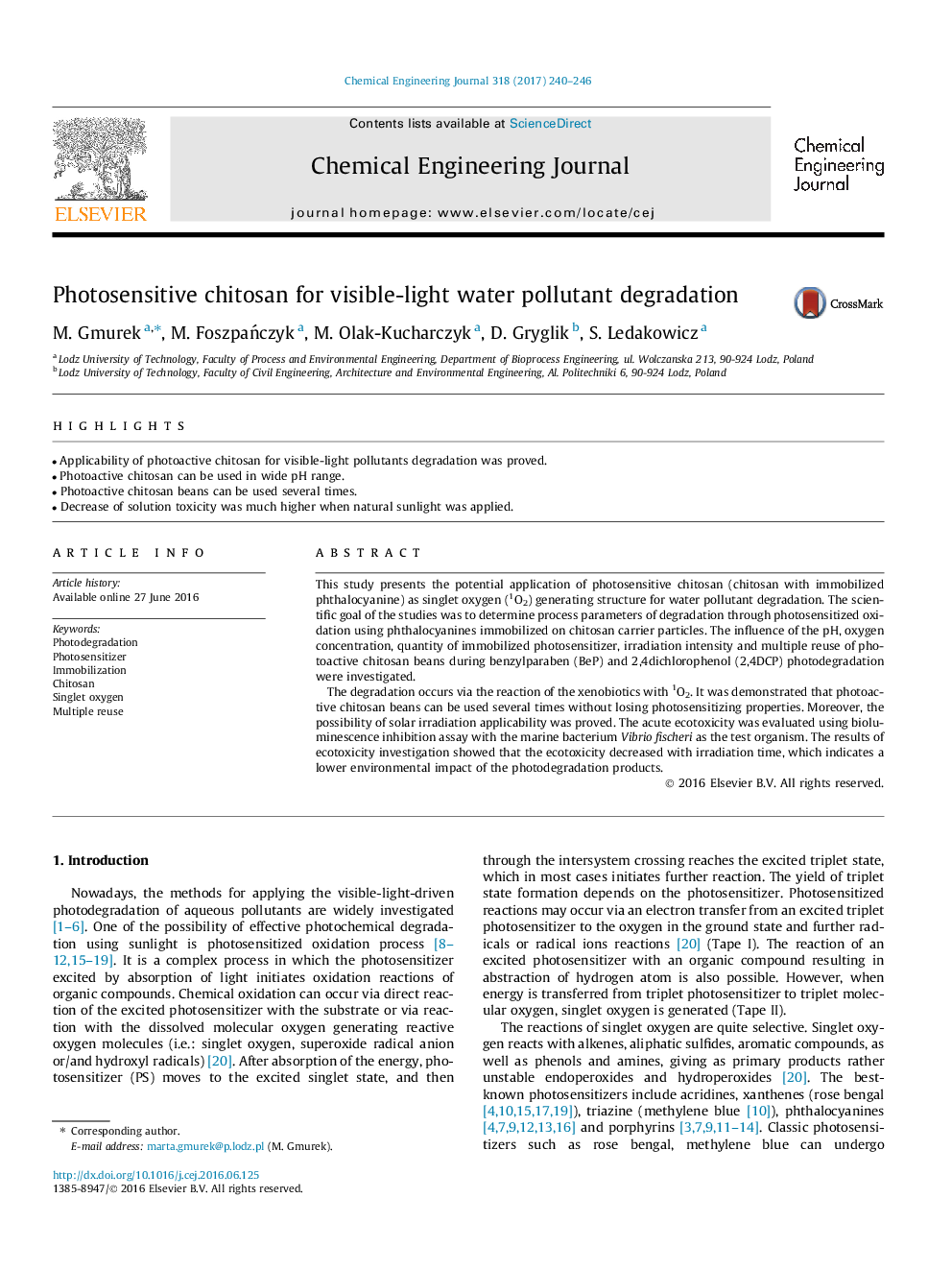| Article ID | Journal | Published Year | Pages | File Type |
|---|---|---|---|---|
| 6466285 | Chemical Engineering Journal | 2017 | 7 Pages |
â¢Applicability of photoactive chitosan for visible-light pollutants degradation was proved.â¢Photoactive chitosan can be used in wide pH range.â¢Photoactive chitosan beans can be used several times.â¢Decrease of solution toxicity was much higher when natural sunlight was applied.
This study presents the potential application of photosensitive chitosan (chitosan with immobilized phthalocyanine) as singlet oxygen (1O2) generating structure for water pollutant degradation. The scientific goal of the studies was to determine process parameters of degradation through photosensitized oxidation using phthalocyanines immobilized on chitosan carrier particles. The influence of the pH, oxygen concentration, quantity of immobilized photosensitizer, irradiation intensity and multiple reuse of photoactive chitosan beans during benzylparaben (BeP) and 2,4dichlorophenol (2,4DCP) photodegradation were investigated.The degradation occurs via the reaction of the xenobiotics with 1O2. It was demonstrated that photoactive chitosan beans can be used several times without losing photosensitizing properties. Moreover, the possibility of solar irradiation applicability was proved. The acute ecotoxicity was evaluated using bioluminescence inhibition assay with the marine bacterium Vibrio fischeri as the test organism. The results of ecotoxicity investigation showed that the ecotoxicity decreased with irradiation time, which indicates a lower environmental impact of the photodegradation products.
